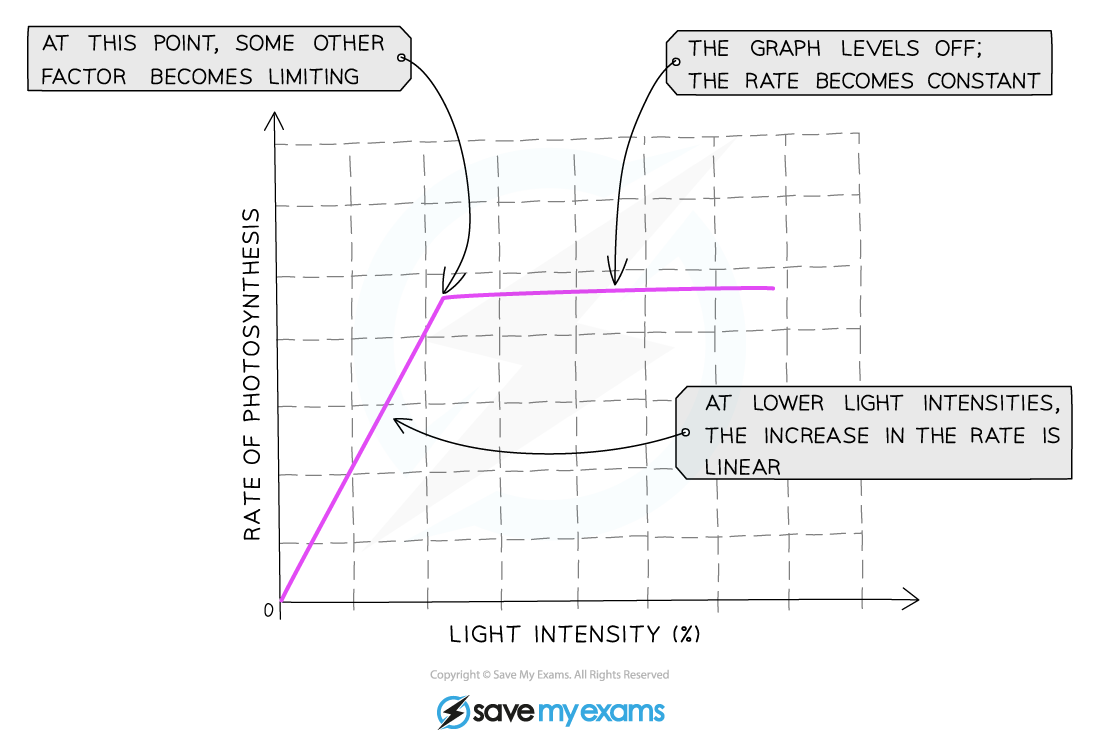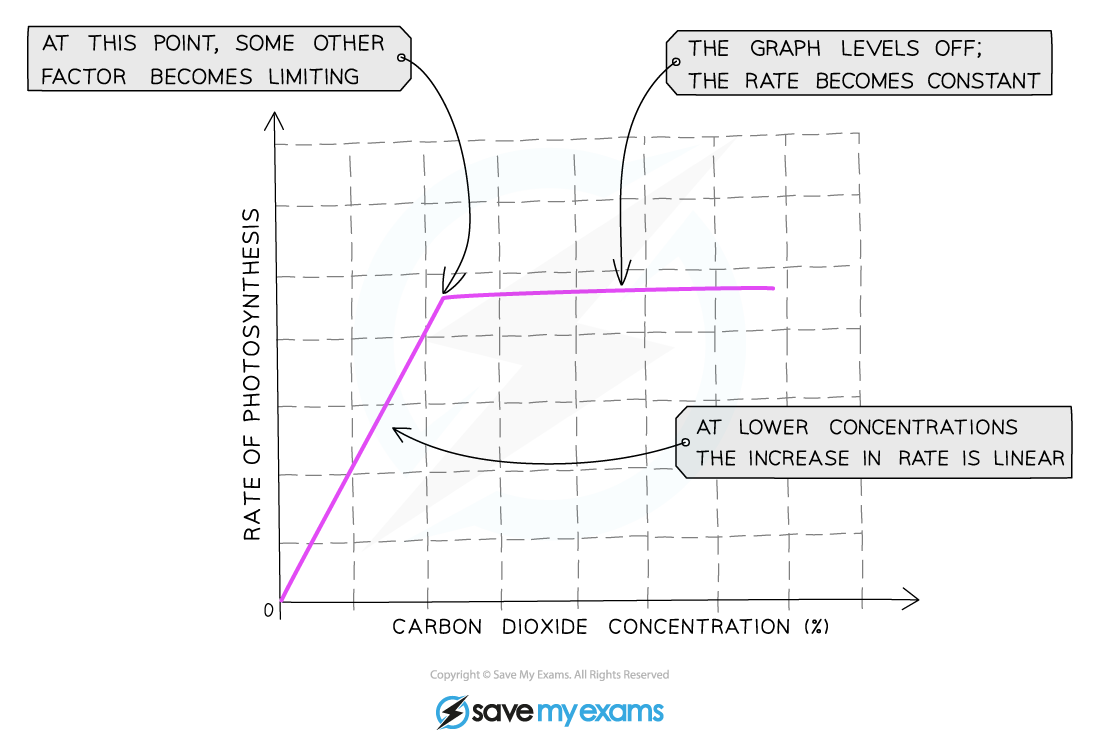Factors Affecting the Rate of Photosynthesis (Edexcel IGCSE Biology) : Revision Note
Did this video help you?
Limiting Factors
Plants do not have unlimited supplies of their raw materials so their rate of photosynthesis is limited by whatever factor is the lowest at that time
So a limiting factor can be defined as something present in the environment in such short supply that it restricts life processes
There are three main factors that limit the rate of photosynthesis:
Temperature
Light intensity
Carbon dioxide concentration
Although water is necessary for photosynthesis, it is not considered a limiting factor as the amount needed is relatively small compared to the amount of water transpired from a plant so there is hardly ever a situation where there is not enough water for photosynthesis
The number of chloroplasts or the amount of chlorophyll in the chloroplasts can also affect the rate of photosynthesis
Temperature
The temperature of the environment affects how much kinetic energy all particles have – so temperature affects the speed at which carbon dioxide and water move through a plant
The lower the temperature, the less kinetic energy particles have, resulting in fewer successful collisions occurring over a period of time
Increasing temperature increases the kinetic energy of particles, increasing the likelihood of collisions between reactants and enzymes which results in the formation of products
At higher temperatures, however, enzymes that control the processes of photosynthesis can be denatured (where the active site changes shape and is no longer complementary to its substrate) – this reduces the overall rate of photosynthesis

The effect of temperature on the rate of photosynthesis
Light intensity
The intensity of the light available to the plant will affect the amount of energy that it has to carry out photosynthesis
The more light a plant receives, the faster the rate of photosynthesis
This trend will continue until some other factor required for photosynthesis prevents the rate from increasing further because it is now in short supply, this factor becomes the limiting factor

Graph showing the effect of light intensity on the rate of photosynthesis
Carbon dioxide concentration
Carbon dioxide is one of the raw materials required for photosynthesis
This means the more carbon dioxide that is present, the faster the reaction can occur
This trend will continue until some other factor required for photosynthesis prevents the rate from increasing further because it is now in short supply, this factor becomes the limiting factor

A graph showing the effect of the concentration of carbon dioxide on the rate of photosynthesis
Chlorophyll
The number of chloroplasts (as they contain the pigment chlorophyll which absorbs light energy for photosynthesis) will affect the rate of photosynthesis
The more chloroplasts a plant has, the faster the rate of photosynthesis
The amount of chlorophyll can be affected by:
Diseases (such as tobacco mosaic virus)
Lack of nutrients (such as magnesium)
Loss of leaves (fewer leaves means fewer chloroplasts)
Genetic factors in the plants, such as whether they have variegated leaves
Examiner Tips and Tricks
Interpreting graphs of limiting factors can be confusing for many students, but it’s quite simple. In the section of the graph where the rate is increasing (the line is going up), the limiting factor is whatever the label on the x axis (the bottom axis) of the graph is. In the section of the graph where the rate is not increasing (the line is horizontal), the limiting factor will be something other than what is on the x axis – choose from temperature, light intensity or carbon dioxide concentration.

You've read 0 of your 5 free revision notes this week
Sign up now. It’s free!
Did this page help you?
